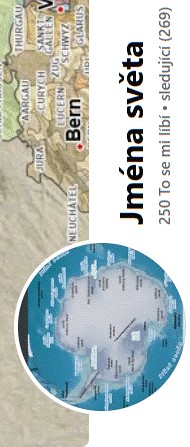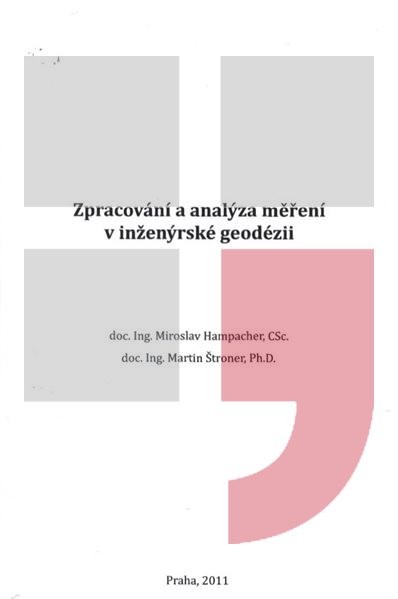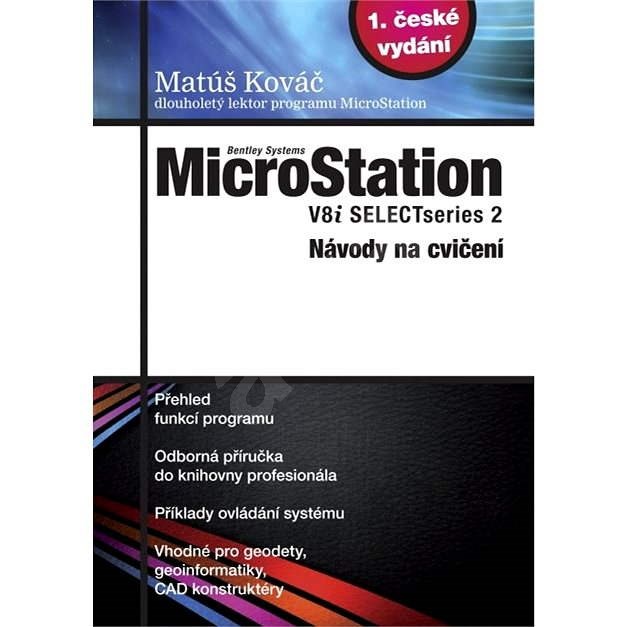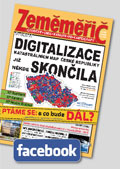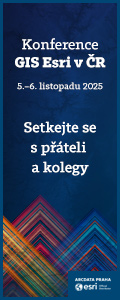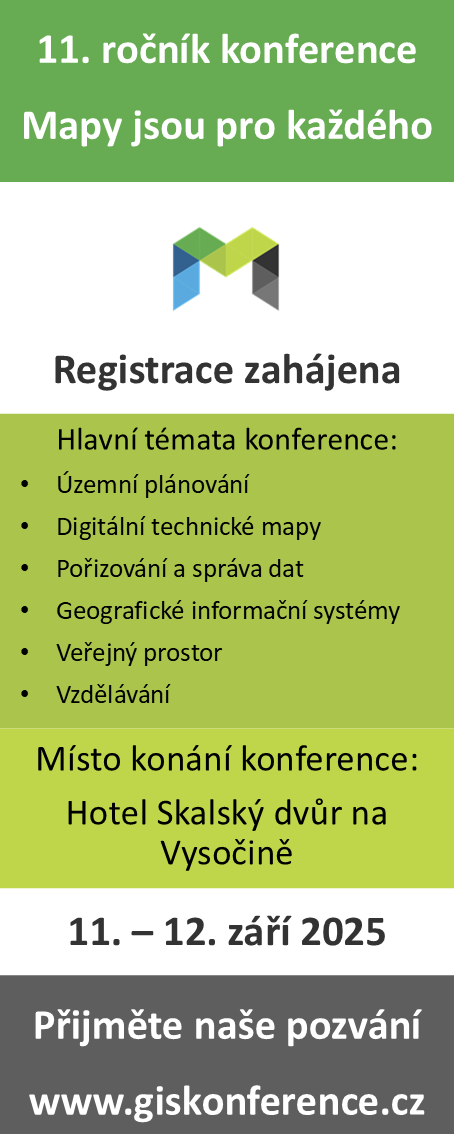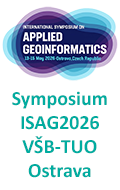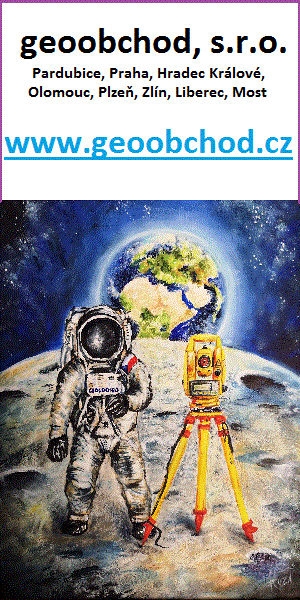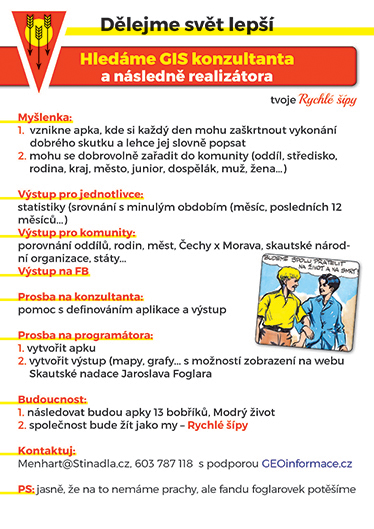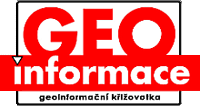zprávy
zdroje zpráv:Vedoucí Oddělení hospodářské správy
7.9.2015 10:52 ČÚZK /Urady/Zememericky-urad/Uredni-deska/Oznameni-a-jina-uredni-sdeleni/Volna-mista/Vedouci-Oddeleni-hospodarske-spravy20150907 - Nová příručka-Sloučení SO
7.9.2015 8:59 ČÚZK /Uvod/Produkty-a-sluzby/RUIAN/RUIAN-novinky/2015/Nova-prirucka-Slouceni-SO20150907 - Nová příručka-Sloučení SO
7.9.2015 8:59 ČÚZK - předpisy a opatření /Uvod/Produkty-a-sluzby/RUIAN/RUIAN-novinky/2015/Nova-prirucka-Slouceni-SOŘeditele Zeměměřického úřadu
7.9.2015 8:38 ČÚZK /Urady/Zememericky-urad/Uredni-deska/Oznameni-a-jina-uredni-sdeleni/Volna-mista/Reditele-Zememerickeho-uraduŘeditele Zeměměřického úřadu
7.9.2015 8:38 Zeměměřický úřad /Urady/Zememericky-urad/Uredni-deska/Oznameni-a-jina-uredni-sdeleni/Volna-mista/Reditele-Zememerickeho-uraduŘeditele Zeměměřického úřadu
7.9.2015 8:38 ČÚZK - předpisy a opatření /Urady/Zememericky-urad/Uredni-deska/Oznameni-a-jina-uredni-sdeleni/Volna-mista/Reditele-Zememerickeho-uraduŘeditele Zeměměřického úřadu
7.9.2015 8:38 ČÚZK - volná místa /Urady/Zememericky-urad/Uredni-deska/Oznameni-a-jina-uredni-sdeleni/Volna-mista/Reditele-Zememerickeho-uraduVýrobní plochy
7.9.2015 2:00 Cenia - Katalog metadat ČR - INSPIRE Výrobní plochy z územních plánů obcí - Zlínský krajGeoForum CS 2015 - program
6.9.2015 7:00 Česká asociace pro geoinformace Organizátoři 16. ročníku tradiční konference GeoForum cs 2015, která se uskuteční ve dnech 21. a 22. září 2015 v hotelovém komplexu Zámek Valeč na Vysočině, zveřejnili programFinále soutěže Student GIS projekt 2015
6.9.2015 7:00 Česká asociace pro geoinformace Společnost ARCDATA PRAHA, kolektivní člen CAGI, Vás zve na 10. studentskou konferenci, kde 29 finalistů z 11 vysokých škol a univerzit představí své odborné práce z oblasti GIS.Konference je pořádána jako putovní a letošní ročník se koná ve spolupráci s Fakultou stavební ČVUT v Praze ve středu 23. 9. 2015.
Přihlašte se na konferenci do 11. 9. 2015, účast je bez
Přihlašte svůj projekt do 3. ročníku soutěže Společně otevíráme data!
6.9.2015 7:00 Česká asociace pro geoinformaceFond Otakara Motejla v rámci expertního programu Fórum pro otevřená data vyhlašuje třetí ročník soutěže o nejlepší aplikaci nad otevřenými daty.
Cílem soutěže je přispět k rozvoji a zkvalitnění služeb pro občany a zviditelnit společenský přínos a podnikatelský potenciál otevřených dat.
Fond Otakara Motejla v rámci expertního programu Fórum pro otevřená
NABÍDKA ZAMĚSTNÁNÍ
2.9.2015 16:00Firma TOPGEOSYS s.r.o., dodavatel špičkových technologií pro geodetické a stavební firmy značky TOPCON - SOKKIA, hledá zaměstnance do svého servisního oddělení na pražskou pobočku. Vyučen v oboru mechanik - elektronik výhodou.
V případě zájmu kontaktujte pana Plška (tel.: 724 013 025, e-mail: plsek@topgeosys.cz)
NABÍDKA ZAMĚSTNÁNÍ
2.9.2015 15:00Firma TOPGEOSYS s.r.o., dodavatel špičkových technologií pro geodetické a stavební firmy značky TOPCON - SOKKIA, hledá zaměstnance do svého servisního oddělení na pražskou pobočku. Vyučen v oboru mechanik - elektronik výhodou.
V případě zájmu kontaktujte pana Plška (tel.: 724 013 025, e-mail: plsek@topgeosys.cz)
Služební místo - vedoucí služebního úřadu - ředitel Katastrálního úřadu pro Ústecký kraj
2.9.2015 7:06 ČÚZK - předpisy a opatření /Urady/Katastralni-urady/Katastralni-urady/Katastralni-urad-pro-Ustecky-kraj/Uredni-deska/Oznameni-a-jina-uredni-sdeleni/Volna-mista/Sluzebni-misto-reditel-KUSlužební místo - vedoucí služebního úřadu - ředitel Katastrálního úřadu pro Ústecký kraj
2.9.2015 7:06 ČÚZK /Urady/Katastralni-urady/Katastralni-urady/Katastralni-urad-pro-Ustecky-kraj/Uredni-deska/Oznameni-a-jina-uredni-sdeleni/Volna-mista/Sluzebni-misto-reditel-KUSlužební místo - vedoucí služebního úřadu - ředitel Katastrálního úřadu pro Ústecký kraj
2.9.2015 7:06 ČÚZK - volná místa /Urady/Katastralni-urady/Katastralni-urady/Katastralni-urad-pro-Ustecky-kraj/Uredni-deska/Oznameni-a-jina-uredni-sdeleni/Volna-mista/Sluzebni-misto-reditel-KU20150901-výběrové řízení ředitel Zeměměřického úřadu
1.9.2015 15:42 ČÚZK - předpisy a opatření /Aktuality-resort/2015/20150901-vyberove-rizeni-reditel-Zememerickeho-ura20150901-výběrové řízení ředitel Zeměměřického úřadu
1.9.2015 15:42 ČÚZK /Aktuality-resort/2015/20150901-vyberove-rizeni-reditel-Zememerickeho-ura20150901-výběrové řízení ředitel Katastrálního úřadu pro Zlínský k
1.9.2015 15:39 ČÚZK - předpisy a opatření /Aktuality-resort/2015/20150901-vyberove-rizeni-reditel-Katastralniho-(3)20150901-výběrové řízení ředitel Katastrálního úřadu pro Zlínský k
1.9.2015 15:39 ČÚZK /Aktuality-resort/2015/20150901-vyberove-rizeni-reditel-Katastralniho-(3)20150901-výběrové řízení ředitel Katastrálního úřadu pro Vysočinu
1.9.2015 15:38 ČÚZK - předpisy a opatření /Aktuality-resort/2015/20150901-vyberove-rizeni-reditel-Katastralniho-(2)20150901-výběrové řízení ředitel Katastrálního úřadu pro Vysočinu
1.9.2015 15:38 ČÚZK /Aktuality-resort/2015/20150901-vyberove-rizeni-reditel-Katastralniho-(2)20150901-výběrové řízení ředitel Katastrálního úřadu pro Ústecký kraj
1.9.2015 15:36 ČÚZK - předpisy a opatření /Aktuality-resort/2015/20150901-vyberove-rizeni-reditel-Katastralniho-(1)20150901-výběrové řízení ředitel Katastrálního úřadu pro Ústecký kraj
1.9.2015 15:36 ČÚZK /Aktuality-resort/2015/20150901-vyberove-rizeni-reditel-Katastralniho-(1)20150901-výběrové řízení ředitel Katastrálního úřadu pro Plzeňský kraj
1.9.2015 15:34 ČÚZK - předpisy a opatření /Aktuality-resort/2015/20150901-vyberove-rizeni-reditel-Katastralniho-ura20150901-výběrové řízení ředitel Katastrálního úřadu pro Plzeňský kraj
1.9.2015 15:34 ČÚZK /Aktuality-resort/2015/20150901-vyberove-rizeni-reditel-Katastralniho-ura20160323Oznámení o vyhlášení výběrového řízení služební místo Odborný referent KN KP Mělník
1.9.2015 14:13 ČÚZK /Urady/Katastralni-urady/Katastralni-urady/Katastralni-urad-pro-Stredocesky-kraj/Katastralni-pracoviste/KP-Melnik/O-uradu/Aktuality/20150901Oznameni-o-vyhlaseni-vyberoveho-rizeni-slu20160420Oznámení o vyhlášení výběrového řízení na tři vedoucí pozice KP Mělník
1.9.2015 14:13 ČÚZK /Urady/Katastralni-urady/Katastralni-urady/Katastralni-urad-pro-Stredocesky-kraj/Katastralni-pracoviste/KP-Melnik/O-uradu/Aktuality/20150901Oznameni-o-vyhlaseni-vyberoveho-rizeni-slu20160317Oznámení o vyhlášení výběrového řízení služební místo Odborný referent KN KP Mělník
1.9.2015 14:13 ČÚZK - předpisy a opatření /Urady/Katastralni-urady/Katastralni-urady/Katastralni-urad-pro-Stredocesky-kraj/Katastralni-pracoviste/KP-Melnik/O-uradu/Aktuality/20150901Oznameni-o-vyhlaseni-vyberoveho-rizeni-slu20160323Oznámení o vyhlášení výběrového řízení služební místo Odborný referent KN KP Mělník
1.9.2015 14:13 ČÚZK - předpisy a opatření /Urady/Katastralni-urady/Katastralni-urady/Katastralni-urad-pro-Stredocesky-kraj/Katastralni-pracoviste/KP-Melnik/O-uradu/Aktuality/20150901Oznameni-o-vyhlaseni-vyberoveho-rizeni-slu20160420Oznámení o vyhlášení výběrového řízení na tři vedoucí pozice KP Mělník
1.9.2015 14:13 ČÚZK - předpisy a opatření /Urady/Katastralni-urady/Katastralni-urady/Katastralni-urad-pro-Stredocesky-kraj/Katastralni-pracoviste/KP-Melnik/O-uradu/Aktuality/20150901Oznameni-o-vyhlaseni-vyberoveho-rizeni-slu20160317Oznámení o vyhlášení výběrového řízení služební místo Odborný referent KN KP Mělník
1.9.2015 14:13 ČÚZK /Urady/Katastralni-urady/Katastralni-urady/Katastralni-urad-pro-Stredocesky-kraj/Katastralni-pracoviste/KP-Melnik/O-uradu/Aktuality/20150901Oznameni-o-vyhlaseni-vyberoveho-rizeni-slu20150917Oznámení o vyhlášení výběrového řízení služebního místa odborný referent KP Benešov
1.9.2015 13:57 ČÚZK - předpisy a opatření /Urady/Katastralni-urady/Katastralni-urady/Katastralni-urad-pro-Stredocesky-kraj/O-uradu/Aktuality/20150901Oznameni-o-vyhlaseni-vyberoveho-rizeni-slu20150917Oznámení o vyhlášení výběrového řízení služebního místa odborný referent KP Benešov
1.9.2015 13:57 ČÚZK /Urady/Katastralni-urady/Katastralni-urady/Katastralni-urad-pro-Stredocesky-kraj/O-uradu/Aktuality/20150901Oznameni-o-vyhlaseni-vyberoveho-rizeni-slu20160317Oznámení o vyhlášení výběrového řízení služební místo Odborný referent KN KP Benešov
1.9.2015 13:57 ČÚZK - předpisy a opatření /Urady/Katastralni-urady/Katastralni-urady/Katastralni-urad-pro-Stredocesky-kraj/O-uradu/Aktuality/20150901Oznameni-o-vyhlaseni-vyberoveho-rizeni-slu20160407Oznámení o vyhlášení výběrového řízení služební místo Odborný rada–právník KN KP Praha-vých.
1.9.2015 13:57 ČÚZK - předpisy a opatření /Urady/Katastralni-urady/Katastralni-urady/Katastralni-urad-pro-Stredocesky-kraj/O-uradu/Aktuality/20150901Oznameni-o-vyhlaseni-vyberoveho-rizeni-slu20160317Oznámení o vyhlášení výběrového řízení služební místo Odborný referent KN KP Mělník
1.9.2015 13:57 ČÚZK /Urady/Katastralni-urady/Katastralni-urady/Katastralni-urad-pro-Stredocesky-kraj/O-uradu/Aktuality/20150901Oznameni-o-vyhlaseni-vyberoveho-rizeni-slu20160323Oznámení o vyhlášení výběrového řízení služební místo Odborný referent KN KP Mělník
1.9.2015 13:57 ČÚZK /Urady/Katastralni-urady/Katastralni-urady/Katastralni-urad-pro-Stredocesky-kraj/O-uradu/Aktuality/20150901Oznameni-o-vyhlaseni-vyberoveho-rizeni-slu20160420-Oznámení na dvě pozice KP Praha-západ
1.9.2015 13:57 ČÚZK - předpisy a opatření /Urady/Katastralni-urady/Katastralni-urady/Katastralni-urad-pro-Stredocesky-kraj/O-uradu/Aktuality/20150901Oznameni-o-vyhlaseni-vyberoveho-rizeni-slu20160112Oznámení o vyhlášení výběrového řízení služebního místa odborný referent KP Benešov
1.9.2015 13:57 ČÚZK /Urady/Katastralni-urady/Katastralni-urady/Katastralni-urad-pro-Stredocesky-kraj/O-uradu/Aktuality/20150901Oznameni-o-vyhlaseni-vyberoveho-rizeni-slu20160420-Oznámení na dvě pozice KP Praha-západ
1.9.2015 13:57 ČÚZK /Urady/Katastralni-urady/Katastralni-urady/Katastralni-urad-pro-Stredocesky-kraj/O-uradu/Aktuality/20150901Oznameni-o-vyhlaseni-vyberoveho-rizeni-slu20160112Oznámení o vyhlášení výběrového řízení služebního místa odborný referent KP Benešov
1.9.2015 13:57 ČÚZK - předpisy a opatření /Urady/Katastralni-urady/Katastralni-urady/Katastralni-urad-pro-Stredocesky-kraj/O-uradu/Aktuality/20150901Oznameni-o-vyhlaseni-vyberoveho-rizeni-slu20160407Oznámení o vyhlášení výběrového řízení služební místo Odborný rada–právník KN KP Praha-vých.
1.9.2015 13:57 ČÚZK /Urady/Katastralni-urady/Katastralni-urady/Katastralni-urad-pro-Stredocesky-kraj/O-uradu/Aktuality/20150901Oznameni-o-vyhlaseni-vyberoveho-rizeni-slu20160323Oznámení o vyhlášení výběrového řízení služební místo Odborný referent KN KP Mělník
1.9.2015 13:57 ČÚZK - předpisy a opatření /Urady/Katastralni-urady/Katastralni-urady/Katastralni-urad-pro-Stredocesky-kraj/O-uradu/Aktuality/20150901Oznameni-o-vyhlaseni-vyberoveho-rizeni-slu20160317Oznámení o vyhlášení výběrového řízení služební místo Odborný referent KN KP Mělník
1.9.2015 13:57 ČÚZK - předpisy a opatření /Urady/Katastralni-urady/Katastralni-urady/Katastralni-urad-pro-Stredocesky-kraj/O-uradu/Aktuality/20150901Oznameni-o-vyhlaseni-vyberoveho-rizeni-sluNa stránkách Českého statistic
1.9.2015 12:00 Plzeňský kraj Na stránkách Českého statistického úřadu byla zveřejněna nová publikace Obce Plzeňského kraje 2014 (https://www.czso.cz/csu/czso/obce-plzenskeho-kraje-2014) s aktuálními údaji za všechny obce v kraji.Nově byla uveřejněna řada dalš
1.9.2015 12:00 Plzeňský kraj Nově byla uveřejněna řada dalších územně plánovacích dokumentací obcí a jejich změn. Vyhledat příslušnou územně plánovací dokumentaci můžete v sekci Územní plánování » Obce v kraji » Územní plány a další nástroje územního plánování. Nově jsou například uveřejněny tyto dokumentace: Územní plán Bezděkov (ORP Klatovy), Územní plán Bezděkov (ORP Rokycany), Změna č. 2 ÚPN SÚ Brnířov, Územní plán obce Červené Poříčí - Změna č. 1 a č. 2, Územní plán Čímice, Územní plán Dešenice - změna č. 2, Změna č. 1 ÚP obce Dlouhá Ves, Územní plán Dražovice, Územní plán obce Hlavňovice, Územní plán sídelního útvaru Horšovský Týn Změna č. 17, Změna č. 1 a č. 3 ÚPN-SÚ Chlumčany, Územní plán Chodov, Změna č. 8 ÚPN SÚ Kdyně, Změna č. 4 ÚPN SÚ Hluboká, Územní plán obce Klenová Změna č. 1, Územní plán Měčín - změna č. 1, Změna č. 2 ÚPN-SÚ Postřekov, Územní plán Prádlo Změna č. 1 a č. 2, Územní plán Předslav a změna č.1, Územní plán sídelního útvaru Přeštice Změna č. 07, Územní plán Ptenín, Změna č. 1 ÚP města Rabí, Změna č. 2 ÚPO Úherce, Územní plán Vlkanov, Územní plán Zborovy, Změna č.1 Územního plánu Zruč-Senec a Změna č. 2 ÚP obce Žichovice.Nově byla uveřejněna řada dalš
1.9.2015 12:00 Plzeňský kraj Nově byla uveřejněna řada dalších územně plánovacích dokumentací obcí a jejich změn. Vyhledat příslušnou územně plánovací dokumentaci můžete v sekci Územní plánování » Obce v kraji » Územní plány a další nástroje územního plánování (http://geoportal.plzensky-kraj.cz/gs/uzemni-plany-a-dalsi-nastroje-uzemniho-planovani/). Nově jsou například uveřejněny tyto dokumentace: Územní plán Bezděkov (ORP Klatovy), Územní plán Bezděkov (ORP Rokycany), Změna č. 2 ÚPN SÚ Brnířov, Územní plán obce Červené Poříčí - Změna č. 1 a č. 2, Územní plán Čímice, Územní plán Dešenice - změna č. 2, Změna č. 1 ÚP obce Dlouhá Ves, Územní plán Dražovice, Územní plán obce Hlavňovice, Územní plán sídelního útvaru Horšovský Týn Změna č. 17, Změna č. 1 a č. 3 ÚPN-SÚ Chlumčany, Územní plán Chodov, Změna č. 8 ÚPN SÚ Kdyně, Změna č. 4 ÚPN SÚ Hluboká, Územní plán obce Klenová Změna č. 1, Územní plán Měčín - změna č. 1, Změna č. 2 ÚPN-SÚ Postřekov, Územní plán Prádlo Změna č. 1 a č. 2, Územní plán Předslav a změna č.1, Územní plán sídelního útvaru Přeštice Změna č. 07, Územní plán Ptenín, Změna č. 1 ÚP města Rabí, Změna č. 2 ÚPO Úherce, Územní plán Vlkanov, Územní plán Zborovy, Změna č.1 Územního plánu Zruč-Senec a Změna č. 2 ÚP obce Žichovice.Na stránkách Českého statistic
1.9.2015 12:00 Plzeňský kraj Na stránkách Českého statistického úřadu byla zveřejněna nová publikace Obce Plzeňského kraje 2014 s aktuálními údaji za všechny obce v kraji.Ředitel Odboru hospodářské správy (1)
1.9.2015 8:52 ČÚZK - volná místa /Urady/Zememericky-urad/Uredni-deska/Oznameni-a-jina-uredni-sdeleni/Volna-mista/Reditel-Odboru-hospodarske-spravy-(1)Ředitel Odboru hospodářské správy (1)
1.9.2015 8:52 ČÚZK - předpisy a opatření /Urady/Zememericky-urad/Uredni-deska/Oznameni-a-jina-uredni-sdeleni/Volna-mista/Reditel-Odboru-hospodarske-spravy-(1)Ředitel Odboru hospodářské správy (1)
1.9.2015 8:52 ČÚZK /Urady/Zememericky-urad/Uredni-deska/Oznameni-a-jina-uredni-sdeleni/Volna-mista/Reditel-Odboru-hospodarske-spravy-(1)Ředitel Odboru hospodářské správy (1)
1.9.2015 8:52 Zeměměřický úřad /Urady/Zememericky-urad/Uredni-deska/Oznameni-a-jina-uredni-sdeleni/Volna-mista/Reditel-Odboru-hospodarske-spravy-(1)20150831-výběrové řízení ředitelé KÚ České Budějovice, Tábor a Jindř. Hradec
31.8.2015 12:29 ČÚZK /Aktuality-resort/2015/20150831-vyberove-rizeni-reditele-KU-Ceske-Budejov20150831-výběrové řízení ředitelé KÚ České Budějovice, Tábor a Jindř. Hradec
31.8.2015 12:29 ČÚZK - předpisy a opatření /Aktuality-resort/2015/20150831-vyberove-rizeni-reditele-KU-Ceske-BudejovZačátek zimního semestru
31.8.2015 10:16 Katedra geoinformatiky UP Olomouc Výuka v zimním semestru začíná v pondělí 21. září (platné pro celou Přírodovědeckou fakultu). STAG v rozvrhu zobrazuje špatné datum 17.9.2015.Výběrová řízení na místa ředitelů Katastrálních pracovišť
31.8.2015 7:00 Česká asociace pro geoinformace Katastrální pracoviště České Budějovice, Tábor a Jindřichův Hradec vyhlašují výběrová řízení na služební místa ředitelů. Více informací k jednotlivým výběrovým řízením naleznete na webových stránkáchVít Voženílek vice-prezidentem ICA
31.8.2015 7:00 Česká asociace pro geoinformaceVážení příznivci kartografie a geoinformatiky,
je mi milou povinností oznámit všem, že na 16. Valném shromáždění Mezinárodní kartografické asociace, které se konalo v rámci 27. Mezinárodní kartografické konference v Rio de Janeiro, byl zvolen nový výkonný výbor pro funkční období 2015 až 2019. Jeho členem – vice-prezidentem – byl zvolen naší společností
Žádost o přijetí do služebního poměru a zařazení na služební místo zaměstnance
28.8.2015 10:53 Zeměměřický úřadŽádost o přijetí do služebního poměru a zařazení na služební místo zaměstnance
Žádost o přijetí do služebního poměru a zařazení na služební místo zaměstnance
28.8.2015 10:53 Zeměměřický úřadŽádost o přijetí do služebního poměru a zařazení na služební místo zaměstnance
Žádost o přijetí do služebního poměru a zařazení na služební místo zaměstnance
28.8.2015 10:53 Zeměměřický úřadŽádost o přijetí do služebního poměru a zařazení na služební místo zaměstnance
Žádost o přijetí do služebního poměru a zařazení na služební místo zaměstnance
28.8.2015 10:53 Zeměměřický úřadZáznam z úrední desky úradu:
Žádost o přijetí do služebního poměru a zařazení na služební místo zaměstnance
Žádost o přijetí do služebního poměru a zařazení na služební místo zaměstnance
28.8.2015 10:53 Zeměměřický úřadŽádost o přijetí do služebního poměru a zařazení na služební místo zaměstnance
Žádost o přijetí do služebního poměru a jmenování na služební místo představeného
28.8.2015 10:51 Zeměměřický úřadŽádost o přijetí do služebního poměru a jmenování na služební místo představeného
Žádost o přijetí do služebního poměru a jmenování na služební místo představeného
28.8.2015 10:51 Zeměměřický úřadŽádost o přijetí do služebního poměru a jmenování na služební místo představeného
Žádost o přijetí do služebního poměru a jmenování na služební místo představeného
28.8.2015 10:51 Zeměměřický úřadŽádost o přijetí do služebního poměru a jmenování na služební místo představeného
Omezení způsobů plateb v závěru roku
28.8.2015 10:49 ČÚZK - předpisy a opatření Český úřad zeměměřický a katastrální zveřejnil novou aktualitu:OMEZENÍ ZPŮSOBŮ PLATEB V ZÁVĚRU ROKU
Vážení klienti,
ve dnech 28. a 29.12.2017 nebude možné uskutečnit platby v hotovosti za poskytnuté údaje z katastru nemovitostí a za návrhy na vklad do katastru nemovitostí. Platby za správní poplatky v těchto dnech bude možné provést kolkem zakoupeným u prodejců cenin nebo bezhotovostním převodem. Na KP Olomouc bude možné platbu provést i prostřednictvím platební karty (pouze za návrh na vklad do KN).
Dále v těchto dnech nebude možné objednat službu sledování změn.
Od 2.1.2018 budou již všechny služby na katastrálních pracovištích bez omezení.
Děkujeme za pochopení.
Zaměstnanci katastrálního úřadu všem klientům přejí příjemné prožití vánočních svátků a v roce 2018 se těšíme na Vaši návštěvu.
Omezení způsobů plateb v závěru roku
28.8.2015 10:49 ČÚZK - předpisy a opatření Katastrální úřad pro Olomoucký kraj zveřejnil novou aktualitu:OMEZENÍ ZPŮSOBŮ PLATEB V ZÁVĚRU ROKU
Vážení klienti,
ve dnech 28. a 29.12.2017 nebude možné uskutečnit platby v hotovosti za poskytnuté údaje z katastru nemovitostí a za návrhy na vklad do katastru nemovitostí. Platby za správní poplatky v těchto dnech bude možné provést kolkem zakoupeným u prodejců cenin nebo bezhotovostním převodem. Na KP Olomouc bude možné platbu provést i prostřednictvím platební karty (pouze za návrh na vklad do KN).
Dále v těchto dnech nebude možné objednat službu sledování změn.
Od 2.1.2018 budou již všechny služby na katastrálních pracovištích bez omezení.
Děkujeme za pochopení.
Zaměstnanci katastrálního úřadu všem klientům přejí příjemné prožití vánočních svátků a v roce 2018 se těšíme na Vaši návštěvu.
Omezení způsobů plateb v závěru roku
28.8.2015 10:49 ČÚZK /Urady/Katastralni-urady/Katastralni-urady/Katastralni-urad-pro-Olomoucky-kraj/O-uradu/Aktuality/platebni-kartyOmezení způsobů plateb v závěru roku
28.8.2015 10:49 ČÚZK - předpisy a opatření Český úřad zeměměřický a katastrální zveřejnil novou aktualitu:Omezení způsobů plateb v závěru roku
Vážení klienti,
ve dnech 28. a 29.12.2017 nebude možné uskutečnit platby v hotovosti za poskytnuté údaje z katastru nemovitostí a za návrhy na vklad do katastru nemovitostí. Platby za správní poplatky v těchto dnech bude možné provést kolkem zakoupeným u prodejců cenin nebo bezhotovostním převodem. Na KP Olomouc bude možné platbu provést i prostřednictvím platební karty (pouze za návrh na vklad do KN).
Dále v těchto dnech nebude možné objednat službu sledování změn.
Od 2.1.2018 budou již všechny služby na katastrálních pracovištích bez omezení.
Děkujeme za pochopení.
Zaměstnanci katastrálního úřadu všem klientům přejí příjemné prožití vánočních svátků a v roce 2018 se těšíme na Vaši návštěvu.
Čestné prohlášení podle § 4 odst. 3 zákona č. 451/1991 Sb.
28.8.2015 10:46 Zeměměřický úřadČestné prohlášení podle § 4 odst. 3 zákona č. 451/1991 Sb.
Čestné prohlášení podle § 4 odst. 3 zákona č. 451/1991 Sb.
28.8.2015 10:46 Zeměměřický úřadČestné prohlášení podle § 4 odst. 3 zákona č. 451/1991 Sb.
Čestné prohlášení - vzdělání
28.8.2015 10:44 Zeměměřický úřadZáznam z úrední desky úradu:
Čestné prohlášení - vzdělání
Čestné prohlášení - zdravotní stav
28.8.2015 10:42 Zeměměřický úřadČestné prohlášení - zdravotní stav
Ovládněte prostorové analýzy
28.8.2015 7:00 Česká asociace pro geoinformace Zaregistrujte se zdarma do online počítačového kurzu společnosti ESRI a ovládněte prostorové analýzy na ArcGIS Online! V průběhu výuky získáte přístup k plné funkcionalitě ArcGIS Online. Kurz startuje 2. září a každý týden absolvujete zhruba 3 výukovéPozemek p. č. 199/2 o výměře 118 m2 v Hodoníně - I
25.8.2015 15:04 ČÚZK - předpisy a opatření /Urady/Katastralni-urady/Katastralni-urady/Katastralni-urad-pro-Jihomoravsky-kraj/Nabidky-majetku/1) Pozemek-p-c-199-2-o-vymere-118-m2-v-HodoninePozemek p. č. 199/2 o výměře 118 m2 v Hodoníně - I
25.8.2015 15:04 ČÚZK /Urady/Katastralni-urady/Katastralni-urady/Katastralni-urad-pro-Jihomoravsky-kraj/Nabidky-majetku/1) Pozemek-p-c-199-2-o-vymere-118-m2-v-HodonineDnes se jako blesk …
24.8.2015 12:24 Komora geodetů a kartografů ČR Dnes se jako blesk rozšířila tato zpráva: Vážené kolegyně, vážení kolegové, oznamuji Vám, že jsem se po 29 letech ve funkci ředitele Střední průmyslové školy zeměměřické dobrovolně rozhodl odstoupit z této funkce ke dni 31.8.2015. Ve školství jsem si toho užil dost a teď nastal čas žít klidněji, bez stresu a starostí. Budu se věnovat […]3. ročník soutěže společně otevíráme data se blíží
24.8.2015 7:00 Česká asociace pro geoinformace 1. září začíná zahajovacím večírkem další ročník soutěže Společně otevíráme data, oceňující nejlepší aplikace nad otevřenými daty.Aplikace, které využívají otevřená data, bude možné do soutěže přihlásit od 1.9. do 31.10. Na ty nejlepší čekají finanční i věcné ceny. Bližší informace budou zveřejněny 1.9. na webových stránkách
20150820 - nové FAQ
21.8.2015 11:56 ČÚZK - předpisy a opatření /Uvod/Produkty-a-sluzby/RUIAN/RUIAN-novinky/2015/20150820-nove-FAQ20150820 - nové FAQ
21.8.2015 11:56 ČÚZK /Uvod/Produkty-a-sluzby/RUIAN/RUIAN-novinky/2015/20150820-nove-FAQFAQ-stavebni_objekty_052016
21.8.2015 9:36 ČÚZK - předpisy a opatření /Uvod/Produkty-a-sluzby/RUIAN/1-Editacni-agendovy-system-ISUI/Casto-kladene-dotazy-k-RUIAN-(FAQ)/FAQ-stavebni-objekty-srpen2015Hloubka půdy
21.8.2015 2:00 Cenia - Katalog metadat ČR - INSPIRE Mapa hloubky zemědělské půdy, mapa velkého měřítka.Třídy ochrany ZPF
21.8.2015 2:00 Cenia - Katalog metadat ČR - INSPIRE Mapa tříd ochrany zemědělské půdy.Skeletovitost půdy
21.8.2015 2:00 Cenia - Katalog metadat ČR - INSPIRE Mapa skeletovitosti zemědělské půdy, mapa velkého měřítka.Skupiny půdních typů
21.8.2015 2:00 Cenia - Katalog metadat ČR - INSPIRE Mapa skupin půdních typů zemědělské půdy, mapa velkého měřítka.23. středoevropská geografická konference - prodloužení termínů
20.8.2015 7:00 Česká asociace pro geoinformace V říjnu se bude konat již 23. středoevropská geografická konference, která se uskuteční 8. – 9. října 2015 v prostorách Pedagogické fakulty Masarykovy univerzity v Brně. Z důvodu prázdnin byl posunut termín registrace účastníků do 14. 9. 2015.Zdroj: Česká geografická
Zmena sídla Geotronics Slovakia, s.r.o.
17.8.2015 15:24 Geotronics.sk Keďže Trimble v tomto roku vykonal veľkú zmenu v portfóliu geodetických zariadení, rozhodli sme sa aj my napredovať. Prvou veľkou zmenou je zmena sídla spoločnosti Geotronics Slovakia, s.r.o. V súčasnosti nás nájdete na novej adrese: Račianska 77/A 831 02 Bratislava Určite nás neobídete, nakoľko sa nachádzame na hlavnom ťahu Račianskej ulice hneď oproti spoločnosti Figaro. [...]Zmena sídla Geotronics Slovakia, s.r.o.
17.8.2015 15:24 Geotronics.sk Keďže Trimble v tomto roku vykonal veľkú zmenu v portfóliu geodetických zariadení, rozhodli sme sa aj my napredovať. Prvou veľkou zmenou je zmena sídla spoločnosti Geotronics Slovakia, s.r.o. V súčasnosti nás nájdete na novej adrese: Račianska 77/A 831 02 Bratislava Určite nás neobídete, nakoľko sa nachádzame na hlavnom ťahu Račianskej ulice hneď oproti spoločnosti Figaro. [...]20160315 - Nové číslo GaKO
17.8.2015 11:48 ČÚZK - předpisy a opatření /Urady/Zememericky-urad/O-uradu/Aktuality/20150817-Nove-cislo-GaKO20151214 - Nové číslo GaKO
17.8.2015 11:48 ČÚZK /Urady/Zememericky-urad/O-uradu/Aktuality/20150817-Nove-cislo-GaKO20160718 - Nové číslo GaKO
17.8.2015 11:48 Zeměměřický úřad 308576Aktuální číslo Geodetického a kartografického obzoru (07/2016) ke stažení zde.
20151214 - Nové číslo GaKO
17.8.2015 11:48 Zeměměřický úřad /Urady/Zememericky-urad/O-uradu/Aktuality/20150817-Nove-cislo-GaKO20151214 - Nové číslo GaKO
17.8.2015 11:48 ČÚZK - předpisy a opatření /Urady/Zememericky-urad/O-uradu/Aktuality/20150817-Nove-cislo-GaKO20160718 - Nové číslo GaKO
17.8.2015 11:48 ČÚZK /Urady/Zememericky-urad/O-uradu/Aktuality/20150817-Nove-cislo-GaKO20160516 - Nové číslo GaKO
17.8.2015 11:48 ČÚZK - předpisy a opatření Aktuální číslo Geodetického a kartografického obzoru (05/2016) ke stažení zde.20160516 - Nové číslo GaKO
17.8.2015 11:48 ČÚZK /Urady/Zememericky-urad/O-uradu/Aktuality/20150817-Nove-cislo-GaKO20150914 - Nové číslo GaKO
17.8.2015 11:48 ČÚZK - předpisy a opatření /Urady/Zememericky-urad/O-uradu/Aktuality/20150817-Nove-cislo-GaKO20150914 - Nové číslo GaKO
17.8.2015 11:48 Zeměměřický úřad /Urady/Zememericky-urad/O-uradu/Aktuality/20150817-Nove-cislo-GaKO20160516 - Nové číslo GaKO
17.8.2015 11:48 ČÚZK - předpisy a opatření Aktuální číslo Geodetického a kartografického obzoru (05/2016) ke stažení zde.20160516 - Nové číslo GaKO
17.8.2015 11:48 Zeměměřický úřad Aktuální číslo Geodetického a kartografického obzoru (06/2016) ke stažení zde.20151116 - Nové číslo GaKO
17.8.2015 11:48 Zeměměřický úřad /Urady/Zememericky-urad/O-uradu/Aktuality/20150817-Nove-cislo-GaKO20160718 - Nové číslo GaKO
17.8.2015 11:48 ČÚZK - předpisy a opatření 308576Aktuální číslo Geodetického a kartografického obzoru (07/2016) ke stažení zde.



